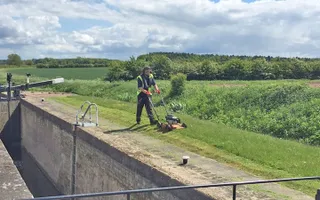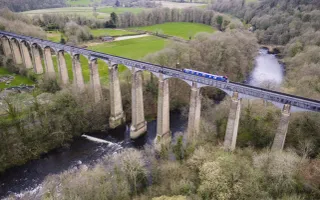Our position on grass cutting
Our canals and towpaths are used by millions of people every week and are home to a rich tapestry of wildlife. They vary from fully surfaced urban routes through to simple tracks in rural landscapes.
Once the motorways of their day, today our charity tries to balance the needs of those who use our canals and towpaths and of the wildlife that now makes its homes along them. For example, it’s important that boaters and paddlers can get on and off the water safely, that towpaths are as accessible as possible, and that our engineers can check the canals’ condition.
The biodiversity along our canals varies in its ecological requirements and how it responds to different frequency of grass cutting. Where we know there are protected species, we have an appropriate mowing regime.
All these factors affect where and how often we cut the grass.






